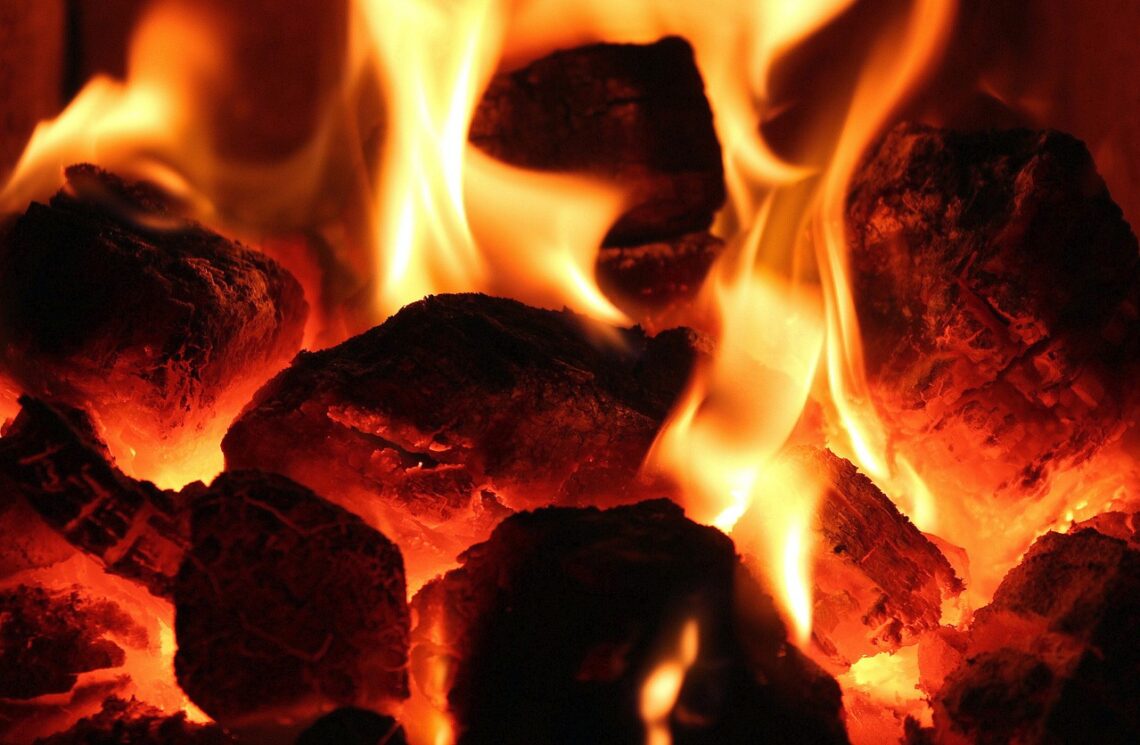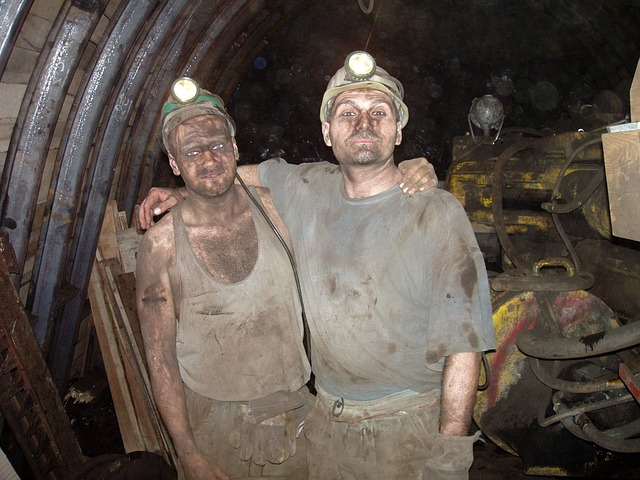
Burning Interesting Facts About Coal
Interesting Facts About Coal
What is coal: Coal is a sedimentary rock that is black in color and often has a glossy sheen. It is mostly carbon with varying amounts of other elements, such as hydrogen, oxygen, sulfur, and nitrogen. Let’s now look at some Interesting Facts About Coal.
Coal is also used in industry for a variety of purposes, such as steel production, cement manufacturing, and the production of synthetic materials.
Coal is a nonrenewable resource, which means it cannot be replaced once it is used. Coal has been used for centuries, but its popularity increased during the Industrial Revolution when it was used to power steam engines, heat buildings, and produce electricity.
Today, coal is still widely used as a fuel for electric power generation, steel production, cement manufacturing, and as a synthetic gas known as “town gas.”
Coal forms from the accumulation of organic material in swamps. The organic material is converted to coal by the heat and pressure of burial. Over time, different types of coal form from different types of organic material. The four main types of coal are anthracite, bituminous, sub-bituminous, and lignite.
Anthracite coal
Anthracite coal is the hardest type of black coal and has a high carbon content. It is used for residential and commercial heating as well as industrial applications such as steel production. Anthracite coal typically has a lower sulfur content than other types of coal which makes it less polluting.
Bituminous coal
Bituminous coal is softer than anthracite but still has a high carbon content. It is used primarily in power generation but can also be used in manufacturing processes such as cement production. Bituminous coal typically has a higher sulfur content than anthracite which can make it more polluting.
Sub-bituminous coal
Sub-bituminous coal is a type of coal that has a lower carbon content than bituminous coal. It is used for power generation and is the most common type of coal in the US. Sub-bituminous coal typically has a heating value of 8,300 to 13,000 British thermal units per pound (Btu/lb).
Lignite coal
Lignite is a type of coal that is found in sedimentary basins around the world. It is considered to be a lump of low-grade coal, with a lower carbon content than other types of coal. Lignite is often used as a fuel for power generation and as a raw material in the production of cement.
Lignite typically has a lower energy content than other types of coal, but it can be burned without being first converted to another fuel. This makes it an attractive option for power plants that are looking for a cheap and readily available fuel source.
The United States has the world’s largest reserves of coal. However, China is the world’s largest producer and consumer of coal. Other major producers include Australia, India, Russia, and South Africa.
How is coal formed
Coal is formed from dead plant matter that is buried underground and subjected to high pressure and heat over millions of years. This process transforms the plant matter into a fossil fuel that we can use for energy.
Coal is a sedimentary rock, meaning it is made up of smaller rocks that have been combined together over time. The most common coal type is anthracite, a hard, shiny black rock. Coal has been used as an energy source for centuries, and it was essential during the Industrial Revolution. Today, coal is still an important energy source in many parts of the world.
Coal-fired power plants generate about 40% of the world’s electricity. However, burning coal releases greenhouse gases like carbon dioxide and methane into the atmosphere, which are major contributors to climate change.
Coal mines

Coal is the most abundant fossil fuel on Earth, and it has been used for centuries to heat homes and power machinery, it’s a popular energy source. Coal is a non-renewable resource, which means it cannot be replenished once used.
Most coal is mined in large open-pit mines. The first step in extracting coal from an open-pit mine is to remove the overburden, which is the soil and rock that lies above the coal seam. Then, giant machines called draglines are used to excavate the coal. Draglines can move as much as 75,000 tons of material in a single day.
After the coal has been extracted from the mine, it must be transported to a power plant where it will be burned to generate electricity. Coal trains typically consist of more than 100 cars, each carrying up to 100 tons of coal.
Underground mining
Underground mining is a type of mining in which coal is extracted from the ground coal beds by digging tunnels into the earth. This type of mining is used when coal deposits are found too deep to be mined using surface mining methods.
The main advantages of underground mining over surface mining are that it is less expensive and it allows coal companies to extract more coal. The main disadvantage of underground mining is that it can be very dangerous for workers.
Coal seams are layers of coal that are found underground. They can be up to 100 feet thick and stretch for miles. Coal seams are formed by the accumulation of plant matter over millions of years.
Coal seams are an important part of the coal mining process. miners must first locate a seam, and then they can begin mining it. coal seams can be mined using a variety of methods, including surface mining, underground mining, and mountaintop removal.
Surface mining is the most common type of mining for coal seams. It involves removing the top layer of soil and rock to access the coal seam beneath. Surface mining is less expensive and less dangerous than underground mining, but it can have a negative impact on the environment.
Underground mines are used when surface mining is not possible or practical.
The Powder River Basin
The Powder River Basin is a geological formation in the United States that spans parts of Montana and Wyoming. It is known for its rich coal reserves, which have been exploited since the late 19th century. The basin is also home to the world’s largest coal mining operation, the North Antelope Rochelle Mine.
The Powder River Basin is a key source of American coal production. In 2012, the basin produced 43% of all U.S. coal, making it the country’s largest coal-producing region. The vast majority of this coal is used for electricity generation, with a small amount going to industrial uses such as steelmaking.
Coal mining in the Powder River Basin is primarily surface mining, as opposed to underground mining. This method is less expensive and more efficient, but it can have negative environmental impacts including air and water pollution.
How is coal used
Coal is a fossil fuel that is used to generate electricity. The United States has the world’s largest coal reserves, and it is one of the country’s leading sources of energy. Coal is primarily used to generate electricity, but it is also used in the production of steel and cement.
In 2018, coal accounted for 27 percent of all U.S. electricity generation. The majority of coal-fired power plants in the United States use pulverized coal, which involves grinding the coal into a fine powder and then burning it.
Coal-fired power plants are emissions-intensive, and they are a major source of greenhouse gas emissions in the United States. In fact, coal emissions are one of the leading causes of climate change.
Coal and global warming
Coal is a non-renewable fossil fuel that is used to generate electricity. Coal burning releases greenhouse gases into the atmosphere, which contribute to global warming.
Coal is the largest source of carbon dioxide emissions from the burning of fossil fuels. In 2013, coal accounted for 43% of global carbon dioxide emissions from fuel combustion.
Emissions from coal-fired power plants are a major contributor to air pollution and climate change. Coal-burning power plants release nitrogen oxides, sulfur dioxide, mercury, and particulate matter into the atmosphere.
These pollutants can cause respiratory problems, heart disease, cancer, and other health problems. Carbon monoxide (CO) is a colorless, odorless, and tasteless gas that is produced when coal burns. CO is found in emissions from cars and trucks, power plants, and other industrial facilities.
CO can also be produced naturally by forest fires and volcanoes.
At low levels, CO exposure can cause headaches, dizziness, nausea, and fatigue. At very high levels, CO exposure can lead to death. Symptoms of CO poisoning include shortness of breath, chest pain, confusion, and loss of consciousness.
Coal dust
Coal dust is an extremely fine powder created by the crushing, grinding, or pulverizing of coal. It is composed of carbon, hydrogen, nitrogen, and sulfur. Coal dust is hazardous to human health because it can be inhaled and cause serious respiratory problems. It can also cause black lung disease. Coal dust is also a fire and explosion hazard in coal mines.
Acid rain is a serious problem that can have devastating effects on the environment. It is caused when power plants burn coal and release sulfur dioxide and nitrogen oxides into the atmosphere. These pollutants react with water vapor in the atmosphere to form acids, which fall back to Earth in the form of rain, snow, or fog.
Acid rain can cause serious damage to crops, forests, and aquatic ecosystems. It can also lead to the leaching of metals from soil and buildings. In humans, acid rain can cause respiratory problems and other health issues.
There are steps that we can take to reduce acid rain, such as using cleaner-burning fuels and installing scrubbers on power plant smokestacks. By working together, we can help protect our environment from the harmful effects of acid rain.
10 Interesting Facts About Coal
Coal was once thought to be a cure for scurvy
The first recorded use of coal was in China in 1000
Coal is the most abundant fossil fuel on Earth. It is found on every continent, including Antarctica.
Coal is America’s most abundant fossil fuel. The United States has more coal than any other country in the world.
Most of the coal in the United States is mined in Wyoming, West Virginia, Kentucky, Pennsylvania, and Illinois.
Coal is used to generate electricity and heat, and is an important component of the steel-making process and steel industry.
In the United States, coal is mined in 25 states and three major regions.
Coal is the official state rock of Utah.
The majority of coal mined in the United States is used for electricity generation.
The United States has the world’s largest reserves of coal, with over a trillion tons.
Now read my article all about cars.


